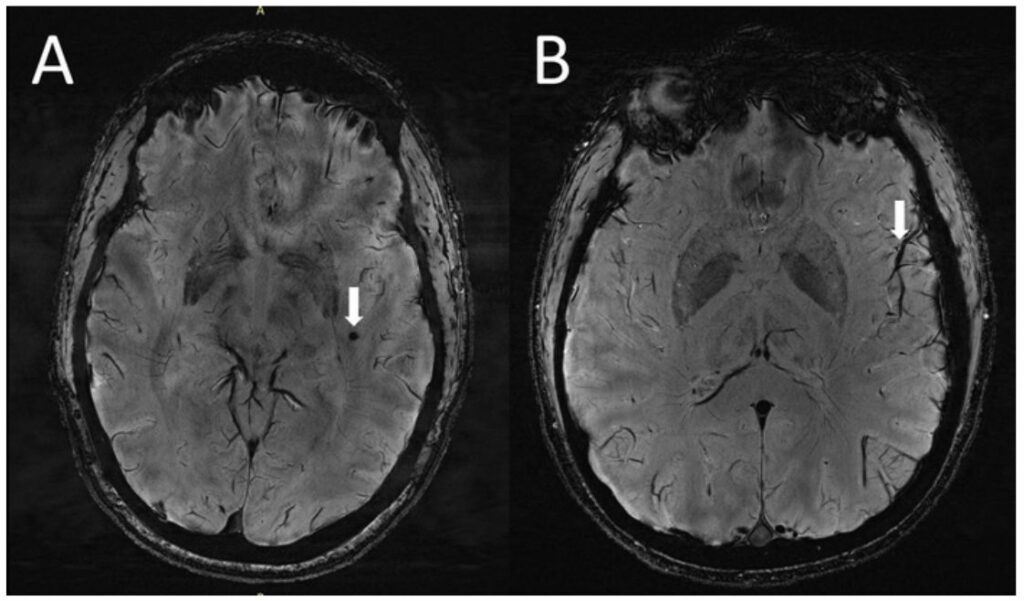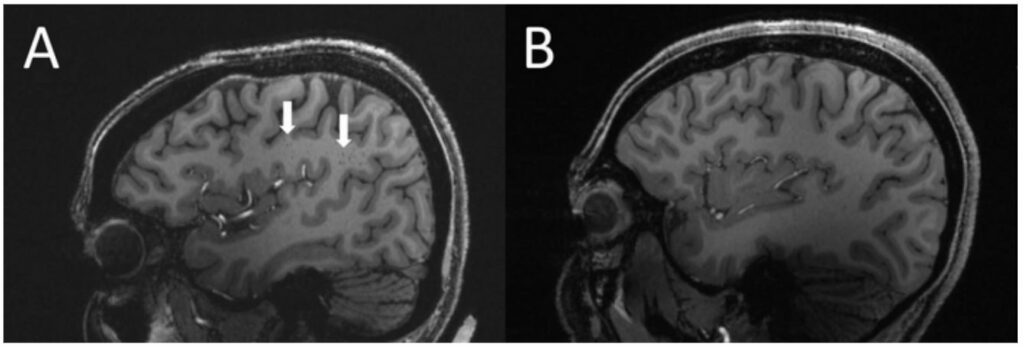Migraine is a common and devastating condition characterized by a severe recurring headache. Other symptoms of migraines include weakness, light sensitivity, and nausea. Around 37 million Americans and 148 million individuals worldwide suffer from chronic migraine, according to the American Migraine Foundation.
New research is the first to show that people who suffer from migraines have abnormally big perivascular spaces in their brains.
“In people with chronic migraine and episodic migraine without aura,” according to co-author Wilson Xu, “there are significant changes in the perivascular spaces of a brain region called the centrum semiovale” and “these changes have never been reported before.”
Migraine is a chronic headache disorder that affects a large percentage of the population. Migraines can also make you feel sick, weak, and sensitive to light. The American Migraine Foundation says that migraine affects more than 37 million people in the U.S. and up to 148 million people around the world.
Perivascular spaces are spaces in the brain that are full of fluid and surround blood vessels. Most of them are found in the brain’s white matter, in the basal ganglia, and in the optic tract. Several variables influence the perivascular spaces, such as blood-brain barrier anomalies and inflammation. Large perivascular gaps may indicate small vessel disease.
“Perivascular spaces are part of a fluid clearance system in the brain,” adds the author. “Studying how they contribute to migraine could help us better understand the complexities of how migraines occur.”
Xu and his colleagues wanted to find out if there was a link between migraines and larger spaces around blood vessels. In order to compare structural microvascular changes in various migraine types, the researchers used 7T MRI with the ultra-high field.
“To our knowledge, this is the first study using ultra-high-resolution MRI to study microvascular changes in the brain due to migraine, particularly in perivascular spaces,” Xu explains. “Because 7T MRI is able to create images of the brain with much higher resolution and better quality than other MRI types, it can be used to demonstrate much smaller changes that happen in brain tissue after a migraine.”

Ten patients with chronic migraine, 10 patients with episodic migraine without aura, and 5 healthy controls of similar age participated in the study. All patients ranged in age from 25 to 60. Patients who had claustrophobia, a brain tumor, previous intracranial surgery, or overt cognitive impairment were not allowed to participate in the study.
The researchers found that the spaces around the blood vessels were bigger in the centrum semiovale (the central area of white matter) and the basal ganglia. The Fazekas scale was used to quantify MRI-detected white matter hyperintensities, or “light up,” lesions. The microbleed anatomical rating system was used to grade cerebral microbleeds. The researchers also gathered clinical information about the disease’s course and severity, its symptoms at the time of the scan, the presence of an aura, and the headache’s side.

A statistical analysis showed that migraine patients had a much higher number of enlarged perivascular spaces in the centrum semiovale than healthy controls. And the severity of deep white matter hyperintensity in migraine patients was linked with the quantity of increased perivascular space in the centrum semiovale.
“We studied chronic migraine and episodic migraine without aura and found that, for both types of migraine, perivascular spaces were bigger in the centrum semiovale,” Xu adds. “Although we didn’t find any significant changes in the severity of white matter lesions in patients with and without migraine, these white matter lesions were significantly linked to the presence of enlarged perivascular spaces. This suggests that changes in perivascular spaces could lead to the future development of more white matter lesions.”

The researchers think that significant differences in the perivascular gaps between migraine patients and healthy controls may indicate a disruption of the brain’s glymphatic system. The perivascular channels used by the glymphatic system, a system for clearing waste from the central nervous system, aid in the removal of soluble proteins and metabolites.
But it is not known if these changes cause migraines or if they are caused by migraines. Continued research with larger case populations and long-term follow-up will help figure out how structural changes affect the development and type of migraines.
“The results of our study could help inspire future, larger-scale studies to continue investigating how changes in the brain’s microscopic vessels and blood supply contribute to different migraine types,” Xu adds. “Eventually, this could help us develop new, personalized ways to diagnose and treat migraine.”
The study’s findings will be presented next week at the Radiological Society of North America’s annual meeting.
Image Credit: RSNA and Wilson Xu
Image Credit: Getty
